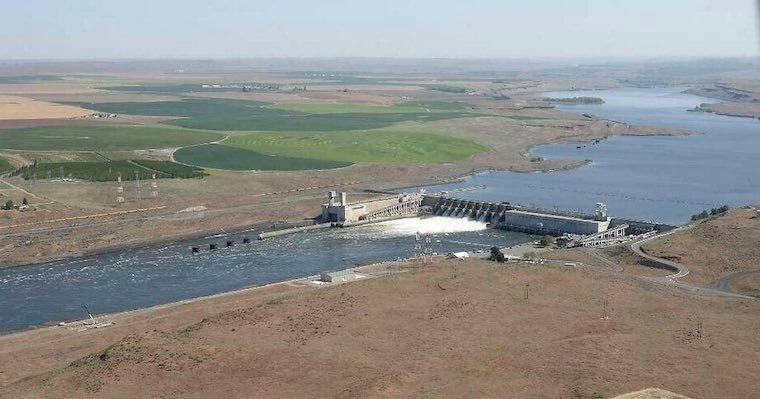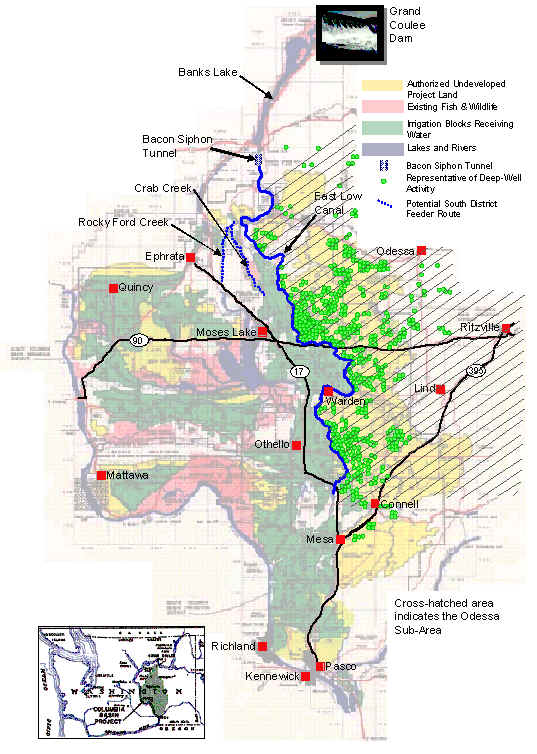forum
library
tutorial
contact

Washington Ag Director:
Agency Monitoring Impact Statement
by Matthew Weaver
Capital Press, December 13, 2019
|
the film forum library tutorial contact |

|
Washington Ag Director:
by Matthew Weaver
|
"The ability to move agricultural products from Lewiston, Idaho, to Portland and Vancouver
is very important to big segments of our ag industry."
-- WSDA director Derek Sandison
 AIRWAY HEIGHTS, Wash. -- Washington's agriculture department is bird-dogging federal agencies as they write an environmental impact statement that could determine the fate of four dams on the lower Snake River.
AIRWAY HEIGHTS, Wash. -- Washington's agriculture department is bird-dogging federal agencies as they write an environmental impact statement that could determine the fate of four dams on the lower Snake River.
The department is "kind of almost looking over their shoulder and critiquing some of the conclusions and ways in which they conduct their analyses," WSDA director Derek Sandison said, calling it "a very active process right now."
The U.S. Army Corps of Engineers, Bureau of Reclamation and Bonneville Power Administration are preparing an environmental impact statement in accordance with the National Environmental Policy Act on the operation, maintenance and configurations for 14 federal projects in the Columbia River System in the interior Columbia River Basin.
U.S. District Judge Michael Simon required the EIS as part of a lawsuit over protected fish species, including an alternative focused on removal of the four Snake River dams and their impacts.
The agriculture department, state Department of Fish and Wildlife and state Department of Ecology are cooperating agencies, which means they work with the people preparing the EIS, Sandison said.
Four dams on the Snake River -- Ice Harbor, Lower Monumental, Little Goose and Lower Granite -- have a "bull's eye on their back" from some environmental groups, Sandison said.
"Although we're nowhere near a decision on whether or not dams should stay in place on the Snake River, it's sort of been ginned up as an issue that is ripe for discussion," he said.
The judge's ruling will have a long-term effect on how the river system is operated, including pool levels.
Sandison said he has some concerns about the methodology used in the analysis of impact of the loss of the river navigation system in the EIS, for example. Those concerns will be brought up, he said.
"That's something that certainly would be scrutinized, because the ability to move agricultural products from Lewiston, Idaho, to Portland and Vancouver is very important to big segments of our ag industry," he said.
Sandison said he's more concerned about future uses, needs and options impacted by the EIS.
The surface water can be used to replace declining well water in the Odessa Subarea, "the better to have essentially no impact" from the environmental impact statement, he said.
Sandison spoke during the Washington Potato Summit Dec. 11 in Airway Heights, Wash. He also discussed other water issues:

In 2012, the cost was calculated to be $5 billion. The conveyance system would need 18 miles of canal before reaching the first customer.
"What can you grow that would pay for a project that expensive?" Sandison said. "Right now, it just doesn't pencil."
But commodity prices are dictated by global supply. Sandison pointed to the need to double the global food supply in the next 40 years on roughly the same amount of land and water as today. The project will make more sense in the future, he said.
"I think it's a matter of time," he said. "It's not a matter of if, it probably will happen at some point in the future, just not in the near-future. We're saying, 'Finish Odessa first. Get that 90,000 acres watered up, and then let's talk about going out to the next project to the East High Canal.'"
Lake Roosevelt is a 6.4 million acre-foot storage reservoir. The entire Columbia Basin Project depends on that reservoir to ensure the ability to deliver water throughout the growing season, Sandison said.
A March forecast is used to consider flows of the Columbia River from April to September. The U.S. Army Corps of Engineers and BC Hydro use the forecast to determine what happens to Canadian reservoir levels in anticipation of runoff.
"If you're wrong in March, you might be pushing too much water out of the system and then not have that water available towards the end of the growing season, specifically August, September and October," Sandison said. "Our position is a predictable river system is really important, particularly water supply. Without assured storage, the river becomes very unpredictable."
The U.S. wants some level of assured storage in a new agreement, Sandison said.
Negotiations also include the Canadian entitlement, a calculated benefit for the water stored on the British Columbia side of the dams. The treaty is based on the concept that benefits are shared equally, but U.S. power companies say the formula used is not accurate and they're paying more than they should, Sandison said, while Canadians like the power revenues that come in and want them to continue.
Canada will argue that its residents of valleys now inundated suffered in building of the dams, Sandison said. Canada argues that it continues to have problems with banks sloughing due to raised reservoirs and impacted fish.
"They're not really too concerned about the fact that we might be overpaying because we owe them," he said. "We've heard that over and over again from the Canadian side ... They would likely argue that they were actually hurt by the treaty and the dams."
learn more on topics covered in the film
see the video
read the script
learn the songs
discussion forum
